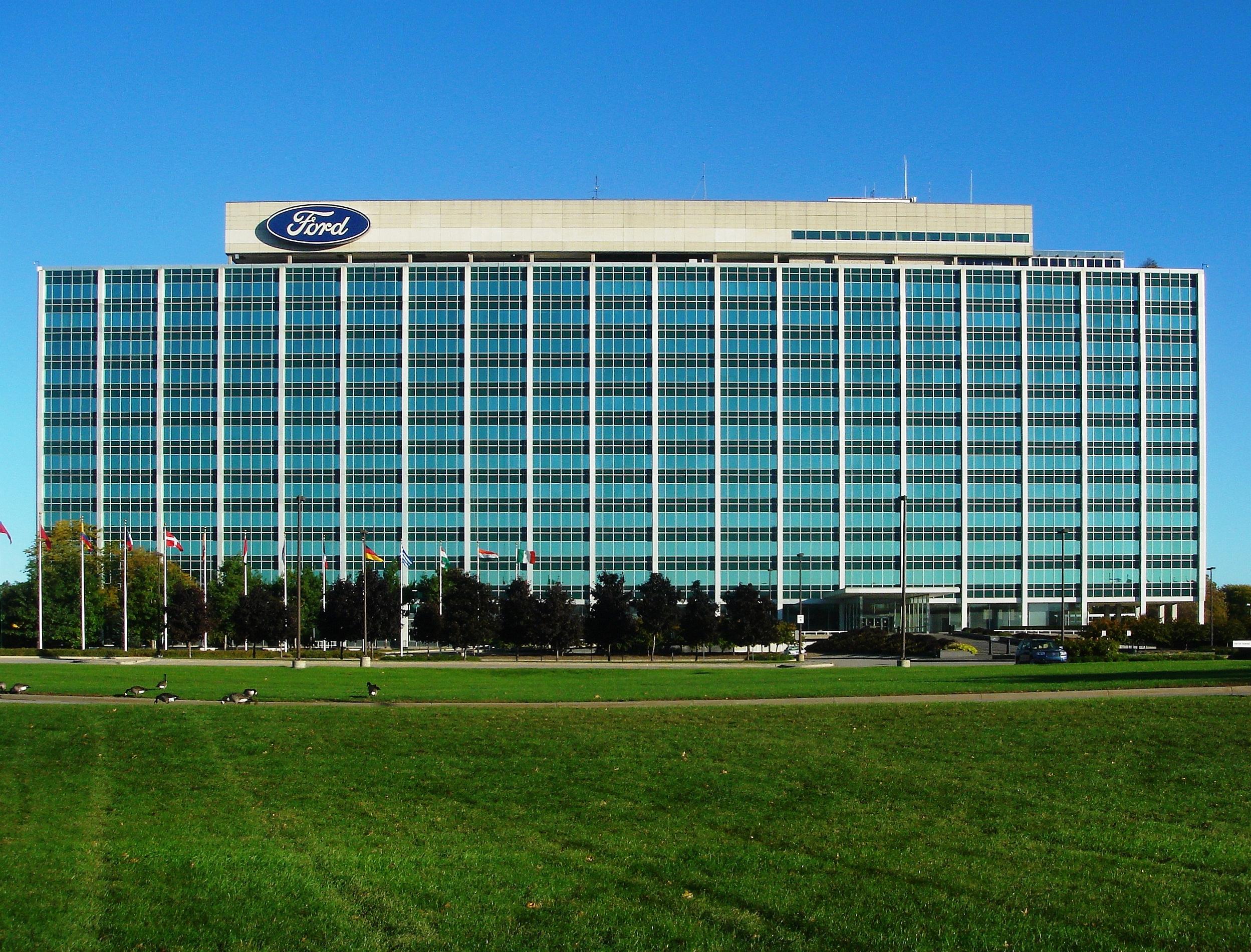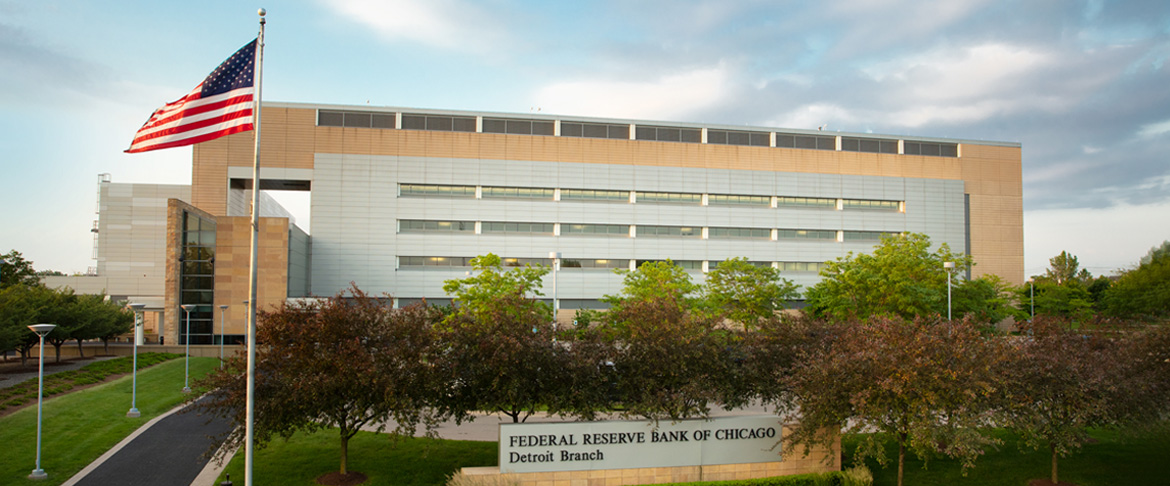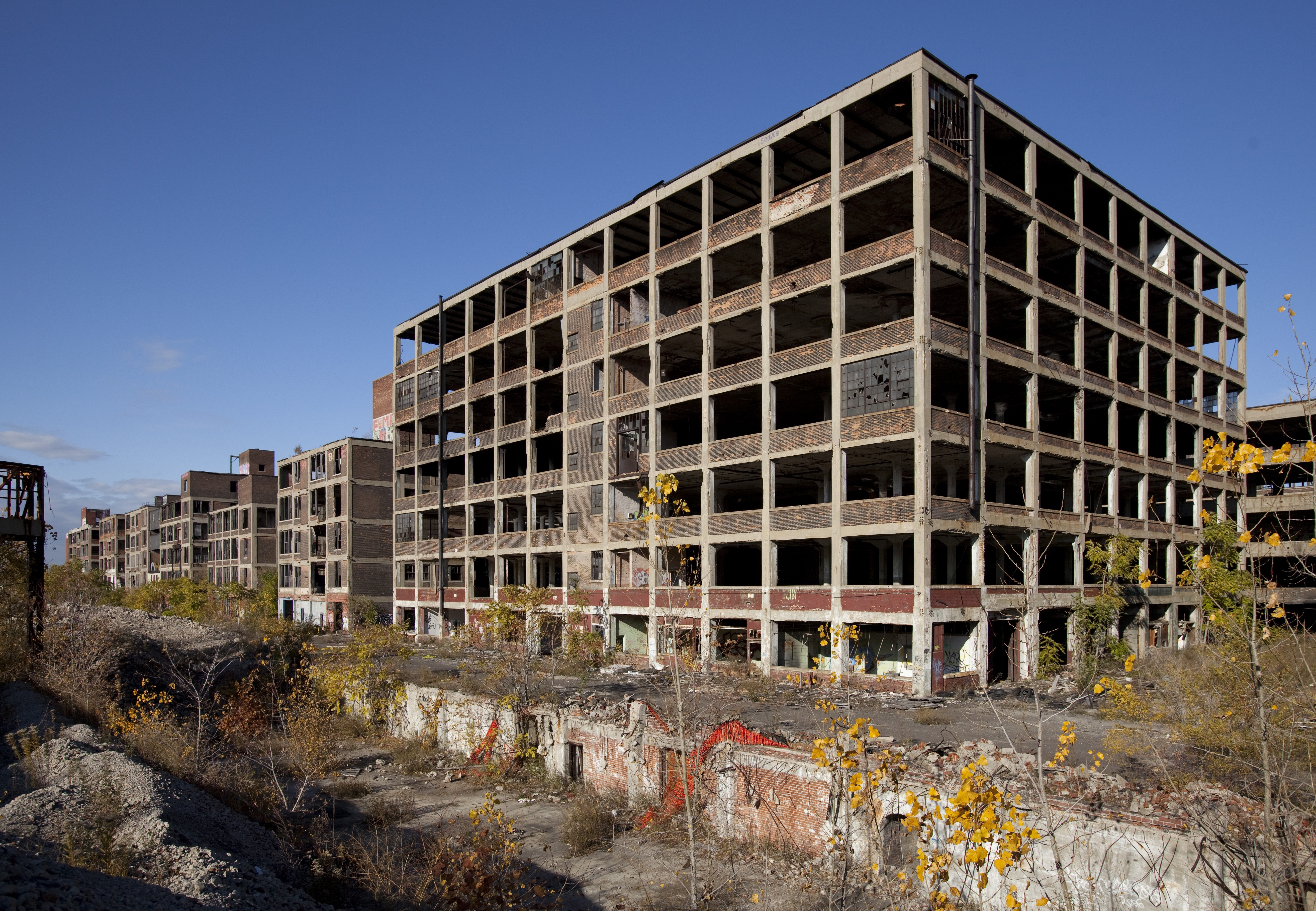5/9/16
During our tour of Federal Mogul today, our tour guide told us a very interesting fact. He informed us that a large shipping company that constantly uses large vehicles saves $1 million dollars every month if they got a mere half of a mile more per gallon. So, as a parts supplier, Federal Mogul attempts to make pistons with reduced friction, even if it makes a minimal impact. A very minor and precise change to a piston to reduce friction that may only add .5 miles for every gallon will save a large consumer of vehicles such as a shipping company one million dollars. Therefore, car manufacturers, who are the consumers for Federal Mogul, will pay much more money for these pistons. This realization on the large im pacts of minute changes to car parts is a commonality I noticed throughout the different parts of the tour.
pacts of minute changes to car parts is a commonality I noticed throughout the different parts of the tour.
Additionally, the concept of how Federal Mogul can enable car manufacturers to change the way they design their cars stood out to me. Mr. Keri used the example of the Corona, which is an alternative for a spark plug that Federal Mogul is currently developing. The Corona, immediately after being put in an engine, makes the car 5% more fuel efficient. This by itself is very significant and would be used by almost all car manufacturers if brought into the market. However, Mr. Keri pointed out that the Corona has the potential to create an even larger impact on fuel efficiency. The Corona uses less work, and because of this, it enables car manufacturers to change the way their engine operates. This gives them the opportunity to be even more fuel efficient, which they would not be able to do with a normal spark plug. So, the Corona not only is 5% more fuel efficient by itself, but with the type of engine changes that it enables car manufacturers to make, can help cars be up to 10-15% more efficient. This would be an incredibly impactful change in the market and, because of this, the Corona would undoubtedly be highly demanded in the market. Federal Mogul prides itself on its precision on the quality and large-scale impacts of its products. It is for this reason that large car manufacturers such as Ford and GM look to them to acquire the essential parts of an engine.
5/10/16
Today we immersed ourselves into the world of Ford Motor Company. From the assembly line where the parts are put together to the vast and extensive history of its influence in the auto industry to the executive decisions in the direction of the company, it was an incredibly informative day. Starting out at the Rouge Plant, to start off, I was amazed at the size of the plant. Of course, I expected it to be big since it was a production plant for one of the biggest car manufacturers in the world. However, I was impressed by the amount of materials and physical capital needed for each individual step in a car’s production. For example, painting the Ford F150 trucks required a massive building with robots that, according to the tour guide, each cost hundreds of thousands of dollars. Additionally, the stamping building where the different aspects of the truck’s body were assembled and joined. The main lesson I too k away from the visit to the Rouge Plant was the amount of effort, thought, and capital needed for each individual part of an automobile. Whether it is a Ford Fusion or a Ford F150, there is an overwhelming amount of work put forth by the company to create the highest quality vehicle for their consumers.
k away from the visit to the Rouge Plant was the amount of effort, thought, and capital needed for each individual part of an automobile. Whether it is a Ford Fusion or a Ford F150, there is an overwhelming amount of work put forth by the company to create the highest quality vehicle for their consumers.
Walking around the Henry Ford, it was intriguing to see the evolution of the Ford automobile. By simply strolling through the museum, you can identify the evolution of the desires of the American consumers in what they want in their automobile. Whether it be a solely utilitarian function in the Model T or the speed and attraction of the Mustang, the museum portrays how Ford has continuously designed their cars in accordance with the wants and mindsets of the American consumers at the time. A few other parts of the Henry Ford that stuck out to me were, for one, the help they played in World War II through their production of aircrafts. I was surprised at the number of aircrafts displayed; Ford had created numerous different aircrafts to help in the American war effort. Additionally, the exhibit showing the Presidential cars particularly interested me. Specifically, the car (or replica of) that President Kennedy was assassinated in was displayed. This was significant to me because I realized that, whether we notice it or not, cars have played an essential part in the history of this nation, whether in the spotlight or in the background.
Our meeting with Hau Thai Tang, Ford’s Vice President of Global Purchasing, gave us an inside look into the decisions of Ford executives’ that guide the future of the company. He informed us that they dictate their purchasing by the concepts of Green, Safe, and Smart. Mr. Thai Tang guided us through the steps they take to work with parts suppliers in developing more adva nced parts for their future cars within the next decade. Ford goes to these suppliers and asks if they have any potential parts that are associated with Green, Safe, or Smart. If the supplier does, then Ford will work with them as early as the Research and Development stage of the process in order to make sure that the supplier can center their physical capital and focus on the advancement that they are making for Ford. I found this whole process very insightful and it was awesome to get a glance into these decisions that are at the core of Ford’s intentions and direction for the future.
nced parts for their future cars within the next decade. Ford goes to these suppliers and asks if they have any potential parts that are associated with Green, Safe, or Smart. If the supplier does, then Ford will work with them as early as the Research and Development stage of the process in order to make sure that the supplier can center their physical capital and focus on the advancement that they are making for Ford. I found this whole process very insightful and it was awesome to get a glance into these decisions that are at the core of Ford’s intentions and direction for the future.
5/11/16
Today we started off the morning by visiting the Chicago Federal Reserve Detroit Branch and met with Paul Traub and another senior economist. Traub talked about the current state of the economy, from interest rates to unemployment to investment and consumption. A part of this presentation I found particularly interesting was the chart depicting American consumers’ purchasing of du rable goods in the last decade. With the Great Recession in 2008, consumers put off buying durable goods, such as cars, until a later date when they could afford it. Mr. Traub compared this drop in consumption to tension in a string. When you pull a string down and eventually let go, it goes up above the normal height. This is exactly what happened with the consumption of durable goods; since about 2010, the purchasing of durable goods, including cars, by American consumers has gone above the normal amount. I wonder if, in the future, this trend will continue to go up or if it will eventually level out as people buy less cars and the level of durable goods purchases drops back down to what it usually is.
rable goods in the last decade. With the Great Recession in 2008, consumers put off buying durable goods, such as cars, until a later date when they could afford it. Mr. Traub compared this drop in consumption to tension in a string. When you pull a string down and eventually let go, it goes up above the normal height. This is exactly what happened with the consumption of durable goods; since about 2010, the purchasing of durable goods, including cars, by American consumers has gone above the normal amount. I wonder if, in the future, this trend will continue to go up or if it will eventually level out as people buy less cars and the level of durable goods purchases drops back down to what it usually is.
The other senior economist presented the numerous characteristics of Detroit that led to its bankruptcy. Some of the key ones were a corrupt leadership, an over dependence on the auto industry, and no inner-city transit transportation system. An amazing fact about Detroit that stuck out to me pertained to their under-populated areas. Detroit is so big that it is able to fit Boston, San Francisco, and Manhattan inside of it. However, Detroit’s population is a little under 700,000. To give some perspective, the populations of Manhattan, Boston, and San Francisco are 1.6 million, 852,000, and 655,000 respectively. Additionally, the senior economist informed us that at the time that Detroit declared bankruptcy, the average 911 response time was roughly one hour. All of these facts are stunning when describing the city that was once the national leader in industrial production and economic prosperity. Although I believe Detroit is certainly improving, it still has an incredibly long way to go to become this flourishing city once again.
auto industry, and no inner-city transit transportation system. An amazing fact about Detroit that stuck out to me pertained to their under-populated areas. Detroit is so big that it is able to fit Boston, San Francisco, and Manhattan inside of it. However, Detroit’s population is a little under 700,000. To give some perspective, the populations of Manhattan, Boston, and San Francisco are 1.6 million, 852,000, and 655,000 respectively. Additionally, the senior economist informed us that at the time that Detroit declared bankruptcy, the average 911 response time was roughly one hour. All of these facts are stunning when describing the city that was once the national leader in industrial production and economic prosperity. Although I believe Detroit is certainly improving, it still has an incredibly long way to go to become this flourishing city once again.
5/12/16
Today was unique in that we did not visit places that you would ordinarily associate with the auto industry. For example, we started out the day by going to an auto recycler who was good friends with Barret’s dad. I did not have any legitimate expectations; I was surprised at the quantity and variety of the different parts they had in stock. The manager informed us that there two highest demanded parts were engines and transmissions. The number of engines in the inventory was almost overwhelming; I didn’t expect a simple auto recycler to have so many engines in its stock. Moreover, the auto recycler had almost every car part imaginable, whether it be seats, doors, or even a seatbelt. I was impressed with the efficiency and organization with which they ran their business. In order to be successful, an auto recycler has to acquire all of the parts it needs to have a plentiful inventory. It then has to sell it to its customers, which is not necessarily an easy task. From what I saw, this place did both of these steps productively.
Our next stop for the day was the Heidelberg Project and met with its creator, Tyree Guyton. Our discussion with him was interesting to say the least. I could talk about the entire conversation but will instead pinpoint one particular part that stood out to me. Someone asked him why he decided to put so many clocks. He stated that our lives are constantly dictated by the time; we are always worried about what time it is. In order to find happiness, according to Tyree, we must find our own time and not be weighted down by the time. We can’t let time decide our own actions. What time is it? It is simply whatever time you want it to be.
5/13/16
Today on our way back to Lexington we visited the Transportation Research Center (TRC) Test Track in East Liberty, Ohio. Jeff Sprague gave us a presentation, summarizing the TRC’s goals and their market. We then went into cars and drove on the various test tracks that the TRC had. First off, the amount of land needed for the entire operation was staggering. A portion that maybe took up 5% of the entire property could fit 45 football fields! I was also surprised at the number of different tests that the TRC conducted in evaluating vehicles. There was a standard track just to test the driving ability and speed of the vehicles. There was also many off-road tests, uphill and downhill, bumps in the road, etc. The list goes on and on. Another noteworthy part of the trip was when Mr. Sprague was asked if, after testing a vehicle, they assess whether it passes or fails. He responded saying that all they do is give the auto manufacturers the data and let the manufacturers decide if they are safe to drive on the road. This way, TRC is not liable for any accidents and therefore can’t be sued for anything. Overall it was an enjoyable and informative trip to the TRC, my first ever test track that I’ve experienced first hand.
various test tracks that the TRC had. First off, the amount of land needed for the entire operation was staggering. A portion that maybe took up 5% of the entire property could fit 45 football fields! I was also surprised at the number of different tests that the TRC conducted in evaluating vehicles. There was a standard track just to test the driving ability and speed of the vehicles. There was also many off-road tests, uphill and downhill, bumps in the road, etc. The list goes on and on. Another noteworthy part of the trip was when Mr. Sprague was asked if, after testing a vehicle, they assess whether it passes or fails. He responded saying that all they do is give the auto manufacturers the data and let the manufacturers decide if they are safe to drive on the road. This way, TRC is not liable for any accidents and therefore can’t be sued for anything. Overall it was an enjoyable and informative trip to the TRC, my first ever test track that I’ve experienced first hand.
Be First to Comment